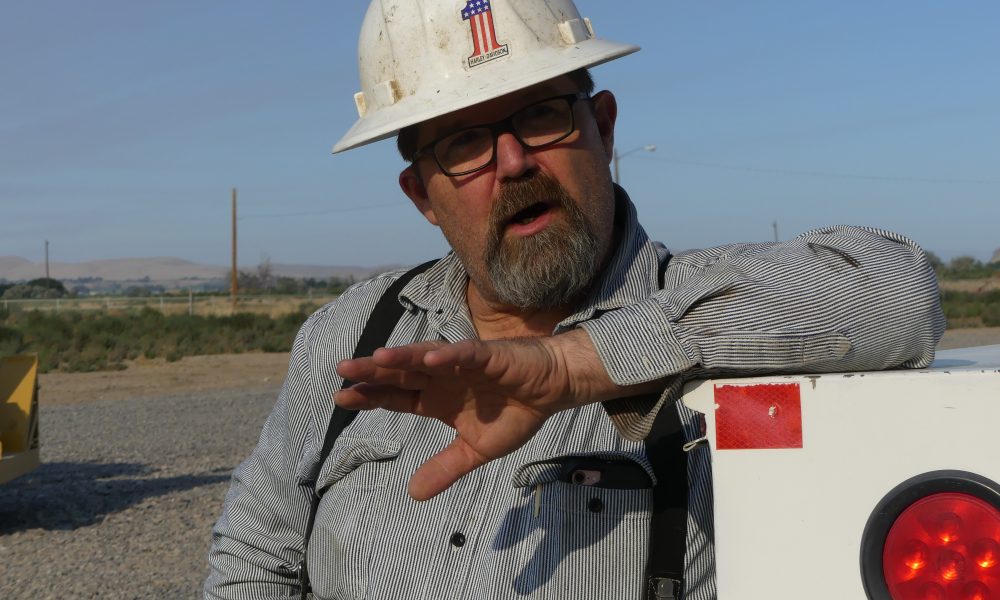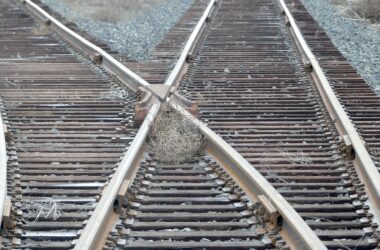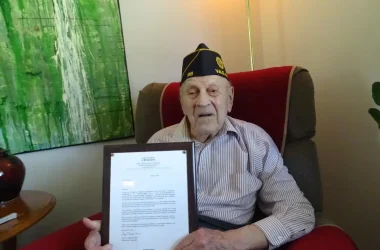 Andy Bentz, secretary of the Owyhee Basin Stewardship Coalition, talks about a white paper released by his organization that outlines a new blueprint to manage federal lands in the county. (The Enterprise/Pat Caldwell)
Andy Bentz, secretary of the Owyhee Basin Stewardship Coalition, talks about a white paper released by his organization that outlines a new blueprint to manage federal lands in the county. (The Enterprise/Pat Caldwell)
VALE – Winter still gripped Malheur County at the tail end of 2016 when the Owyhee Basin Stewardship Coalition faced a decision.
The coalition – made up of 300 paying members and another 11,000 supporters – was riding high after leading an effort that opposed designating the Owyhee Canyonlands as a federal monument. An alliance of environmental groups, citizens and businesses had proposed preserving 2.5 million acres of the canyonlands inside a monument designation but President Barak Obama declined to do so before he left office.
With the Canyonlands proposal off the table – at least for the time being – the leadership of the local rangeland advocacy group could either declare victory and go home or plan for the future.
Andy Bentz, secretary of the coalition, said the choice was easy.
“The board, in conjunction with membership, agreed we should find, maybe, a better way,” said Bentz.
Last week, the details of that better way were released to the public in the form of a white paper crafted by the group.
The white paper outlines an ambitious and locally-controlled range management plan for federal ground in the county.
Collectively, the initiatives in the white paper will serve as the foundation for federal legislation on land management in the county, said Elias Eiguren, coalition treasurer and Jordan Valley rancher.
“We have a long way to go between here and putting the concepts into action on the ground but I think there are a lot of good ideas in there,” Eiguren said.
The Oregon Natural Desert Association, one of the conservation groups that supported the monument effort, said Wednesday the coalition plan left questions.
“At this point, it is difficult to weigh in further until OBSC shares more details behind its vision,” said the Oregon Natural Desert Association in an emailed statement.
The white paper sketches five major concepts for managing federal lands:
oRepair rangeland by halting the spread of invasive plants and grasses.
oAllow more flexibility with existing federal land use rules.
oSafeguard traditional regional industries such as ranching, farming, mining, and recreation.
oCreate a land management institute at a regional college with stable funding.
oForm an independent federal board to see that any new legislation created by the coalition is implemented.
Eiguren said eliminating invasive plants has a variety of benefits for the range.
Eiguren also said range restoration means “healthy rangeland with strong perennials that do not burn on an annual basis.”
Flexibility with existing federal land use regulations is also crucial, said Bentz.
A good example, he said, is to imagine a 300-acre parcel full of the invasive weed medusahead.
“Let’s say there is a wilderness study area that includes a third of that patch. Could Congress give a mandate to the BLM to administratively lift up the restriction of that piece of ground that has that problem?” said Bentz.
Bentz said once the medusahead is cleared out and the land restored, the wildness study restriction could return.
“It eliminates that bad actor and puts back the grasses and shrubs that belong there,” said Bentz.
Now, said Bentz, the BLM is strictly regulated on what kind of restoration work can be completed on a section of land with such a designation.
“The land just sits there and dies. You can do all the work you want to next to it but it doesn’t make any difference,” said Bentz.
Bentz said maintaining local industries such as ranching and farming is another way to safeguard the range.
“There is a value of having those industries functioning here. You can’t just simply say, ‘Hey, it’s the BLM’s problem.’ Someone has to care for the land. Rural communities know and understand the land,” said Bentz.
Eiguren said the Rangeland Institute of Excellence would ensure a team of dedicated land management experts in the future.
“We need to be promoting and encouraging the next generation of land managers to be educated right here in Malheur County where they would be working on the land,” said Eiguren.
Eiguren said the institute could be a joint effort between the Owyhee Basin Stewardship Coalition and a regional college like Eastern Oregon University. A university would provide the faculty and the program while utilizing the county’s unique landscape as a teaching tool.
“They could use the land as a laboratory and it would be a real four- to six-year undergraduate program,” said Eiguren.
Eiguren said the government accountability board proposal is still “very much in the works.”
If the Congress creates new land management legislation for the county, the accountability board would see the laws are followed.
“It would be overseeing how the BLM puts those practices in place and give a review on the progress they make on an annual basis,” said Eiguren.
Bentz said the white paper is the culmination of a year and a half of hard work by coalition leadership. That work included seeking input from county residents at a series of public meetings earlier this year.
“We looked at literally hundreds of different challenges and opportunities and we believe, while it is not perfect, what we are looking at now is truly the right thing to do for the land,” said Bentz.
While the Oregon Natural Desert Association has adopted a wait-and-see philosophy toward the white paper, it did agree there is a “strong set of shared values focused on securing a healthy future of the landscape.”
“We must continue to have inclusive conversations with each other to forge common sense solutions to Oregon’s Owyhee before it is too late,” said the association. Bentz said the white paper is a good, first step for the coalition.
“Ours is a work in progress. We still have to do a lot of work with our senators and congressmen. So, the odds of success: I have no idea. But it won’t be from a lack of trying,” said Bentz.
Reporter Pat Caldwell: [email protected] or 541-473-3377.




